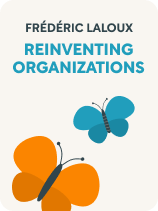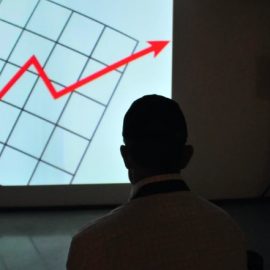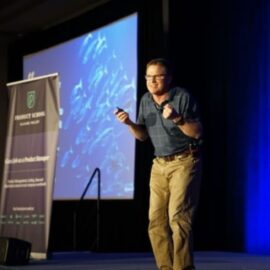

This article is an excerpt from the Shortform book guide to "Reinventing Organizations" by Frédéric Laloux. Shortform has the world's best summaries and analyses of books you should be reading.
Like this article? Sign up for a free trial here.
How is an organization’s purpose determined? Should profit be a driver or merely a byproduct?
The strongest driver of a company’s culture is its overriding purpose in the world. As Frédéric Laloux explains in Reinventing Organizations, this purpose is not dictated from on high but emerges organically from the work the company does and the values of its members.
Keep reading to learn about the preeminence of organizational purpose in visionary companies.
Organizational Purpose
Laloux contends that, in a visionary company, organizational purpose replaces profitability as the reason for the company’s existence while guiding how it interacts with competitors, clients, and the community at large. For example, a software company whose higher purpose is to raise computer literacy in impoverished areas might offer discounts to elementary schools and libraries, or partner with them to seek grants for funding.
(Shortform note: In Start With Why, Simon Sinek argues that a defining purpose is not only valuable for organizational structure but is also an essential component of connecting with customers. Without a clear, inspirational purpose, marketers must rely on manipulation tactics that may lead to short-term gains but don’t establish long-term trust.)
Laloux asserts that, from a visionary perspective, organizations have a calling, just as people do. While an organization’s calling is initially determined by its founders, it can change. The job of those in leadership roles is not to dictate what that calling will become but to allow the company’s purpose to emerge and shift organically over time. The needs of the world may align with the company’s values in surprising ways, pushing the organization in new directions.
(Shortform note: More has been written about individuals’ search for purpose than that of entire organizations, but many of the same ideas apply. In The Success Principles, Jack Canfield states that you can derive a statement of purpose by articulating your positive traits and aligning them with your ideal vision of the world. In Who Will Cry When You Die?, Robin Sharma recommends regularly stepping back for a big-picture view of your place in the world (or in our case, your organization’s) and how your overriding purpose creates meaning.)
The shift from “profit” to “purpose” as the prime motivator means that fear for survival is no longer an underlying factor. Laloux says that visionary organizations act from an attitude of abundance. When the mission is paramount, visionary companies will often aid their own competitors, if doing so helps them achieve their goals.
(Shortform note: Even companies operating from the modern paradigm can engage in this practice. For instance, Microsoft’s guiding purpose is “to empower every person and every organization on the planet to achieve more.” In Hit Refresh, Microsoft CEO Satya Nadella describes how in order to better focus on this goal, they began cooperating with Apple and Google, turning their rivalry into strategic partnerships that emphasize long-term goals rather than short-term competitive gains.)
To be sure, profits are necessary, but visionary organizations view them as a byproduct of fulfilling the company’s purpose. For example, the companies included in Laloux’s study all perform very well against their rivals. Nevertheless, Laloux admits that his research may be colored by survivorship bias—he did not survey any companies that implemented visionary practices and failed. (Shortform note: In Built to Last, Jim Collins and Jerry I. Porras conclude that strong core philosophies are essential to long-lasting organizations and that organizations don’t have to choose between purpose and profit. Collins and Porras argue that a core philosophy has two components—values and purpose—both of which must be concise and actionable.)
Exercise: Determine Your Business’s Overriding Purpose
Laloux says that visionary organizations have a defining purpose beyond making profits and providing value for shareholders. This may be true of many organizations that have not yet adopted a visionary mindset.
- Consider an organization that you contribute time to, either as an employee or volunteer. Outside of financial gain, what does that organization hope to accomplish? What tangible effect on the world does it hope to achieve?
- Imagine that you founded an organization of your own. What purpose would you hope for it to accomplish? What personal values would you want the organization to embody?

———End of Preview———
Like what you just read? Read the rest of the world's best book summary and analysis of Frédéric Laloux's "Reinventing Organizations" at Shortform.
Here's what you'll find in our full Reinventing Organizations summary:
- The practices and values that are inherent in the next level of human organization
- A look at the paradigm shifts in organizational structure over the past 10,000 years
- How to implement visionary practices at your company






